Pchum Ben (Ancestors’ Day)
This weekend, Cambodian expatriates in Australia celebrated the Khmer Buddhist festival of Pchum Ben (បុណ្យភ្ជុំបិណ្). I took my camera along to one such celebration in Melbourne’s south-east.
Pchum Ben (បុណ្យភ្ជុំបិណ្) is known in English as Ancestors’ Day. In Cambodia where Buddhism is the predominant religion, people gather in temples to pay their respects to their ancestors at this time of the year. Pchum Ben is an important festival on the Cambodian calendar, so as migrants from Cambodia have spread across the globe, so too has the celebration.
My wife was born in Cambodia, so it was for this reason that I accompanied her and her family to a relatively new suburban temple in Melbourne’s southern suburbs to observe Pchum Ben. Back in 2014, I wrote about Cambodian New Year and so I felt it might be good to document this other important cultural celebration. I won’t pretend that this constitutes a proper explanation of Pchum Ben; for that I refer you to an article in the Phnom Penh Post. These are merely my observations.
Wat Monirangsi
Wat Monirangsi is located in Doveton in Melbourne’s south-east (wat is Khmer for temple). Unlike Wat Buddharangsi, which I wrote about last time, Wat Monirangsi is far more modest, having been converted initially from a domestic residence. Blink and you could miss it.
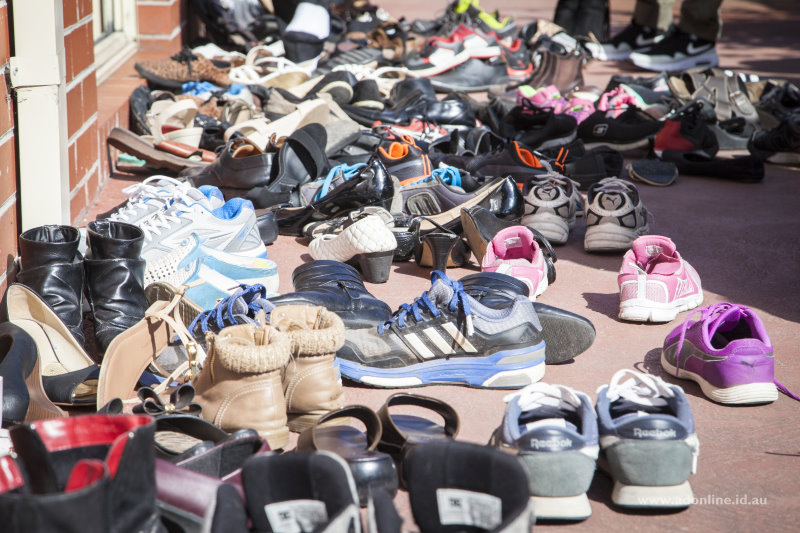
As is custom at Buddhist temples, shoes must be removed prior to entry. Very early on, I learnt to tie my two shoes together because it’s so easy for left to separate from right amongst the hundreds of pairs!
Inside, there is a busy throng of people. Being such a big event, there is much commotion as preparations are made and people anticipate the day ahead. Members of the congregation will bring food, both as offerings to the resident monks and as charitable donations.
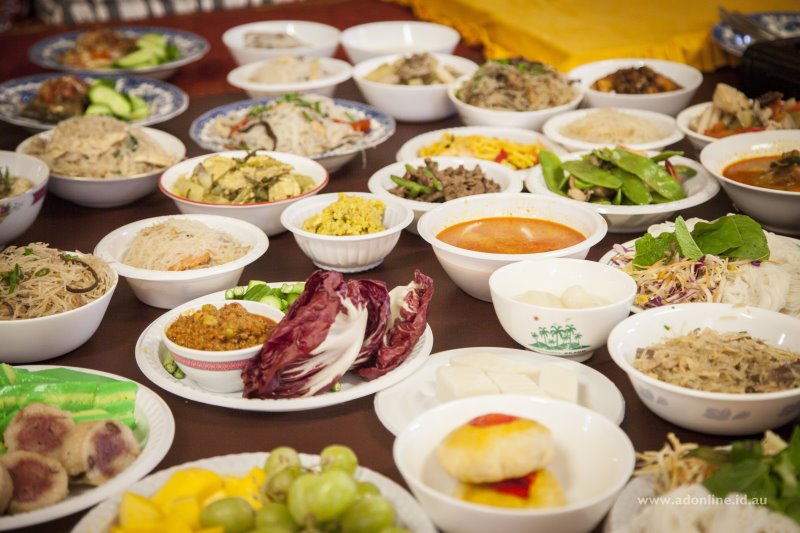
The food is presented nicely and laid-out before the monks at the front of the temple. During this time, a monk will chant prayers in the ancient but extinct languages of Sanskrit or Pali.
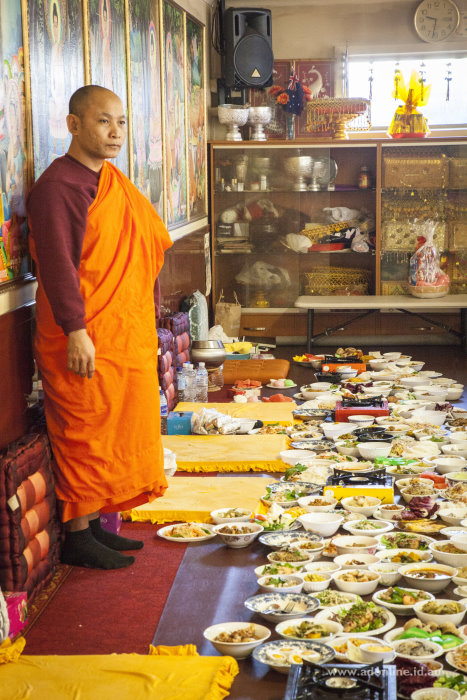
Before the proper proceedings commence, some people will make personal prayers whilst burning incense in front of statues of the Buddha. The altar (if that is the correct term) at Wat Monirangsi is rather spectacular because it has a beautiful mural of a Bodhi Tree painted behind it which extends to the ceiling.
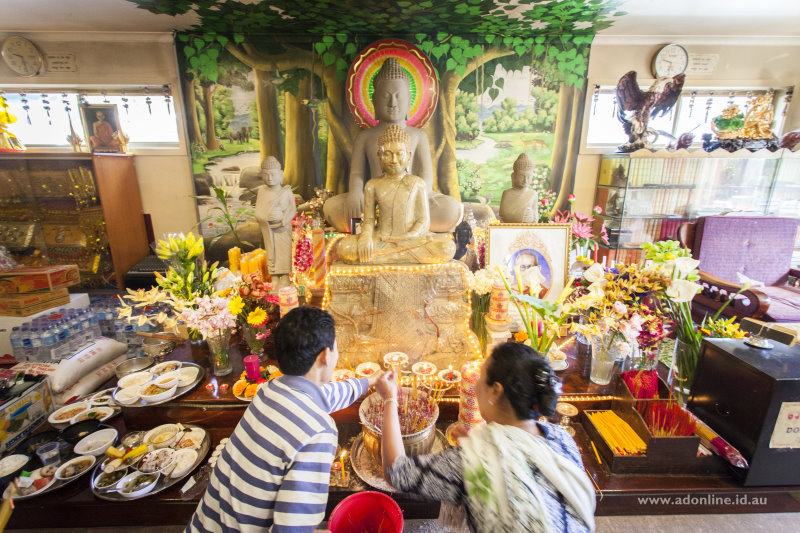
At the start of the ceremony, people will kneel before the monks and serve rice into silver bowls as offerings for ancestors. Each person moves along the procession and serves a little into each bowl.

The monks then start chanting prayers in a ceremony which lasts for approximately an hour. I can’t tell you what most of the ceremony is about because the part that isn’t in Pali or Sanskrit is spoken in Khmer (Cambodian) and I don’t understand that language either! Part of the ceremony is dedicated to ancestors and the congregation pray to those who have died.
The ceremony will end before noon to allow the monks to eat because custom dictates that Buddhist monks should not take meals after midday. As a sign of respect from the congregation, the monks will eat first.
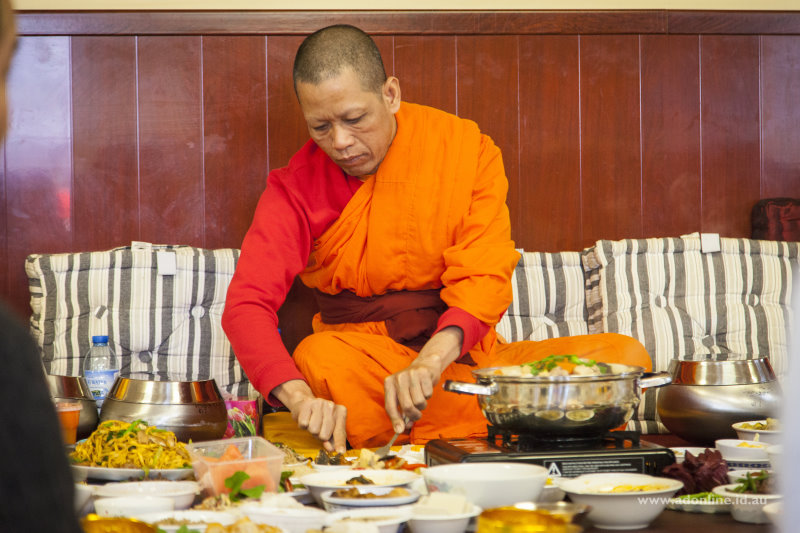
After the monks have eaten, it’s time for a sermon. Again, I cannot tell you what it was about but it lasted for approximately fifteen minutes.
Once the sermon is concluded, it’s time to eat! The food that is left-over from the monks is divided amongst the congregation (there is plenty to go around). This is a great opportunity to try some tasty new foods cooked by someone else!

Families will gather on mats placed over the floor of the temple and share a meal together. There is a lively hustle and bustle as people jostle for a place on the floor and children compete for the best snacks.
Temple Etiquette
To Western eyes accustomed to the tranquil atmosphere of a church, a Khmer Buddhist temple may come as quite a shock. A Khmer Buddhist temple is alive with banter and the movement of excited children. Aside from the requirement to remove shoes at the entrance, there is a comparatively laissez-faire approach to people’s actions once inside. Sometimes it looks like controlled chaos!
When I entered Wat Monirangsi, I was the only barang (បារាំង, Caucasian). Since I had the largest camera and was using it enthusiastically, I was soon approached and asked about what I was doing. Once it was clear that I was not a journalist, people were happy but I couldn’t help but feel a little singled-out, especially when I looked around at what others were up to: Almost every person inside was shooting some sort of video or taking pictures with their phones.
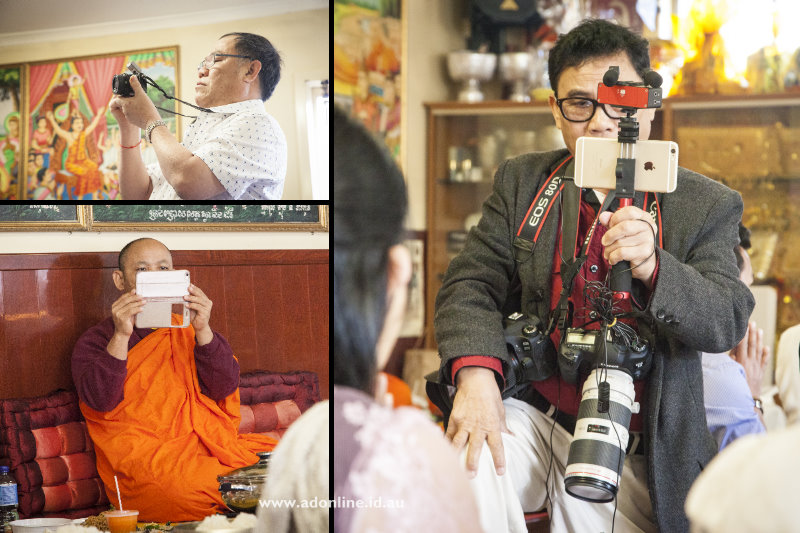
This year’s Pchum Ben at Wat Monirangsi must have been the most documented religious festival in Australia!
Another aspect of the temple etiquette that may come as a surprise is the realisation that participation in the religious observances is somewhat optional. Whilst there were many people inside during the service, just as many were socialising outside waiting for lunch to commence!
After lunch, we all headed home with our bellies happily filled.
Comments
One response to “Pchum Ben (Ancestors’ Day)”